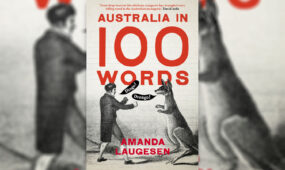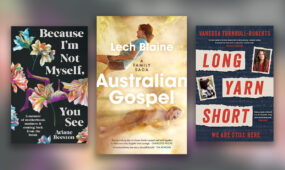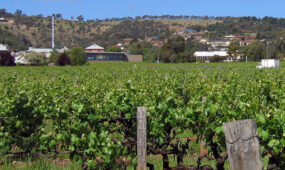The Story of Australian English
Books & Poetry

Strewth! Who’da thunk it? A book about how we talk and write Down Under.
Kevin Barry (“Kel”) Richards presents this examination of language development. As his three-page bibliography identifies, it’s is not a new area for contemplation, but unlike the plethora of academic texts before it, this book has all Aussie blokes and sheilas firmly in its sights.
With 20 chapters and more than 278 pages, it has an easy-reading feel that enhances the bold promise of “a spirited survey of our version of the English language from its birth to the present day”.
Richards’ radio-announcing experiences are put to good use here as he presents a highly accessible historical narrative; with embracing colloquialisms, we are invited as join with him in this literary walkabout. It’s easy to do so, as the text is littered with vocabulary that is identifiable, irrespective of age or life experience.
Part of the joy of discovery is the anticipation of when some of your own favourite terms will appear. I mean, who isn’t familiar with Anzac or barbie or digger or kangaroo? This isn’t a hard yakka read.
Opening with What is Aussie English? Richards succinctly establishes the premise upon which to explore further. Readers are challenged to consider their own views about the impact of American TV shows and ponder just why it is that we use language the way we do.
In case we haven’t worked it out, the concluding chapter provides six arguments to help clarify our thoughts on The Future of Aussie English. In between there is the chronological sharing of significant language influences: Native Tongues; Gold! Larrikin Lingo; Digger Dialects, and Speaking Strine, for example.

Get InReview in your inbox – free each Saturday. Local arts and culture – covered.
Thanks for signing up to the InReview newsletter.
Not only is the spoken tone of this successful blend of history and etymology (histology?) engaging, Richards’ stylistic and structural elements are also significant. Consistently he is able to foreshadow what is to come and remind us of what has been. This transparency is honest; here is an author simply sharing the benefits of his hard work. And for the sceptics, key references are embedded to prove authenticity.
The “wordlist” at the end of each chapter, highlighting key terms, is also an important inclusion; what better way to stimulate verbal play? Familiar names such as Andrew Barton (“Banjo”) Paterson and CJ Dennis come with admirable contextual information, while the profile of the influential Dharuk people and feminist Nancy Keesing extend our new learning even further.
The relevance of this publication is obvious – for academic or personal motivations, the outcome is learning with a healthy dose of entertainment. The Story of Australian English is bloody good. Dinkum.
Support local arts journalism
Your support will help us continue the important work of InReview in publishing free professional journalism that celebrates, interrogates and amplifies arts and culture in South Australia.
Donate Here






Comments
Show comments Hide comments